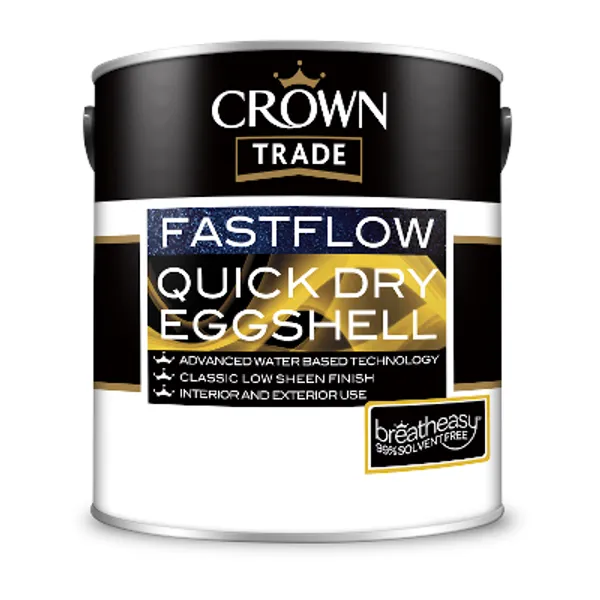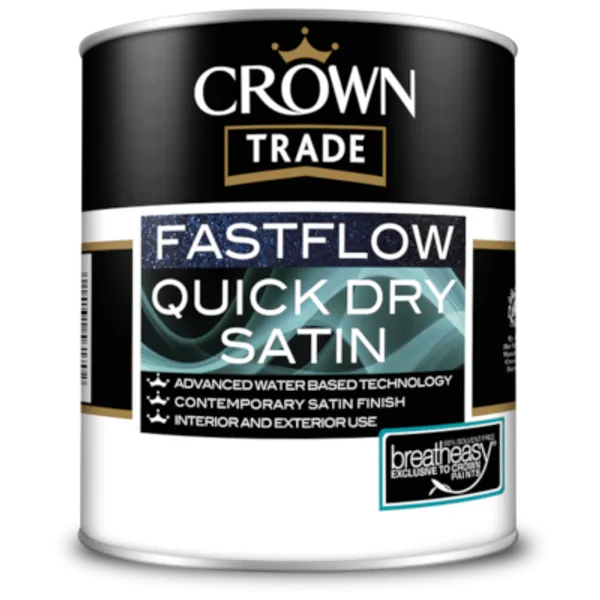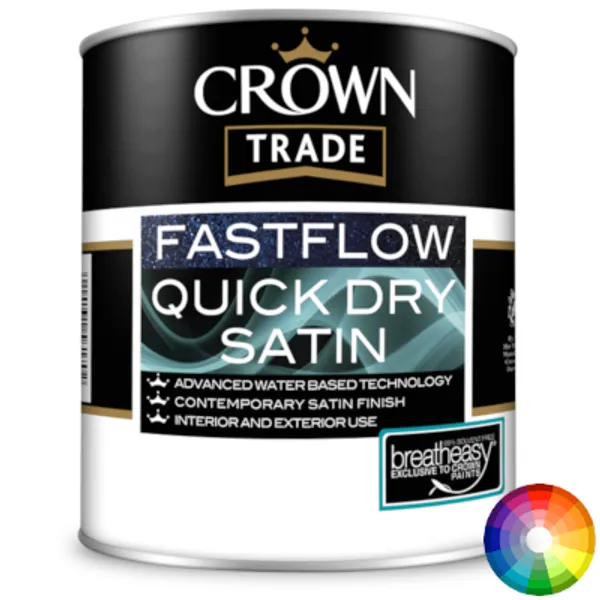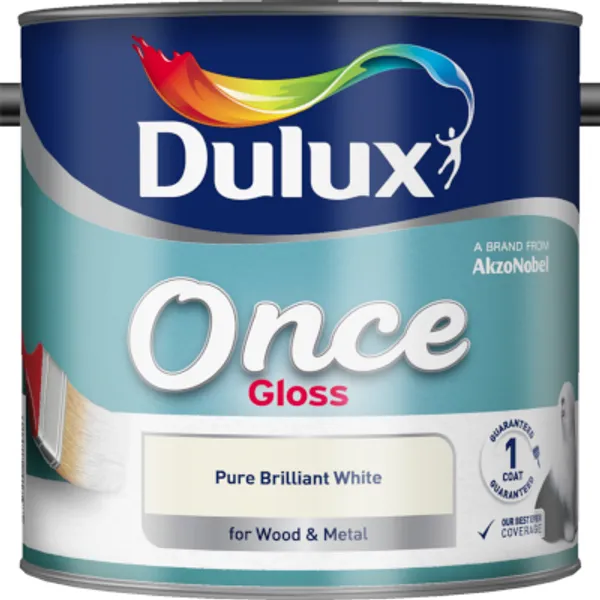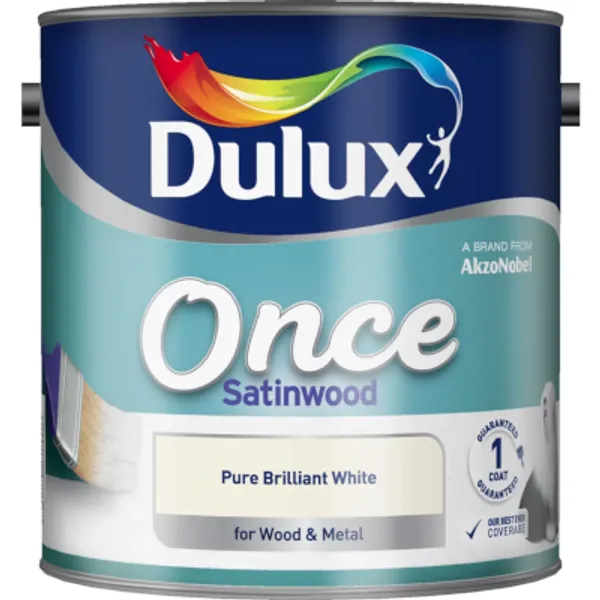The Best Paint For Skirting Boards
Whether you are fully decorating a room or simply looking to tidy up some of the interior trim of your home, painting skirting boards can be the difference between a nice room and a beautiful room. While they can often be neglected and left unpainted for many years, taking the time to paint them is a fantastic way to elevate your home's interior and take it to the next level.
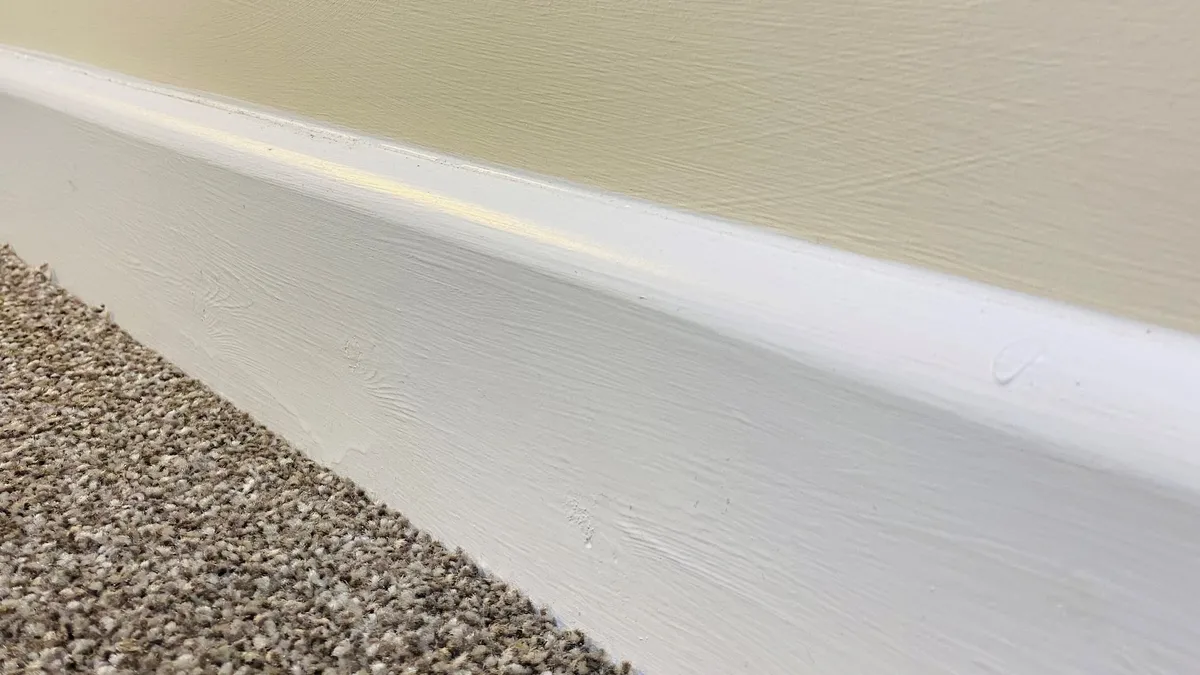
What Paint Is Used On Skirting Boards?
Before discussing the best paints for skirting boards, it is important to first establish what paint is suitable for this. Skirting boards are made in a range of timber forms, from softwood & hardwood to MDF, which is the most popular material for skirting.
There are three main things to consider when choosing what paint to use on skirting boards; retail or trade paint, oil-based or water-based paint and what finish to opt for.
Retail Paint Vs Trade Paint
Firstly let's discuss what is meant to retail paint & trade paint. Most major paint manufacturers will produce two versions of their popular paints, a retail version that is designed for the average homeowner and a trade version that is designed for professional decorators. These two versions usually vary in a number of ways to suit the different needs of either DIY'ers or professional decorators. The retail version of the paint is made as cost-effective as possible as the average DIY'er is more price conscious when buying paint. Due to this they have lower coverage and are less durable, while the trade version offers a consistently professional finish in as little coats as possible. This is because a professional decorator needs to achieve excellent results in as little time as possible, as the cost of their labour increases with each hour they must spend applying the paint.
The higher quality ingredients in trade paint comes at a higher initial cost, however it actually offers better value for money as it will go much further thanks to its higher coverage and is much less likely to need repainting in a matter of years thanks to its higher durability. We always recommend opting for the best quality paint you can afford, as contrary to what many think, you get what you pay for when it comes to paint.
Water-Based Paint Vs Oil-Based Paint
The next thing you must consider when choosing a paint is whether to use a water-based paint or an oil-based paint. These two forms of paint vary in terms of the solvent they use to dry the paint.
Water-Based Paint Advantages
- Dry quicker than oil based
- Brushes are relatively easy to clean in water
- Low odour
- Non yellowing
- Lower VOC's
Water-Based Paint Disadvantages
- Can be prone to chipping
- Take as long as two weeks to fully harden
- Lower sheen levels
- The finish achieved at first can be less impressive
Oil-Based Paint Advantages
- A higher level of sheen can be achieved
- As they dry slower, they can achieve less brush strokes and can be easier to work with
- Traditionally offer higher durability
- Harden much quicker than water based
Oil-Based Paint Disadvantages
- Comes with an unpleasant odour
- Brushes must be cleaned using turps or white spirit
- High levels of VOC's
- They yellow over time, especially with white shades
Most decorators have a preference between oil-based and water-based paints. While oil-based paints have traditionally been higher quality, changes to VOC regulations and advances in water-based technology has meant that both forms of paint are equally high-quality. If you are a novice DIY'er, a water-based paint will be easier to use and will allow you to apply two coats in the same day. If you have the time to wait 16-24 hours between coats and want to achieve a highly durable finish on your skirting boards, especially if you are not using a white shade, an oil-based paint may be best suited for you.
Finish
The final consideration when it comes to what paint to use on skirting boards is what paint finish to opt for. Paints vary in their level of sheen, otherwise known as the amount of light they reflect. The higher the sheen, the more light it reflects and the more durable it is to scuffs and marks. Matt paint is generally not tough enough to resist knocks, plus it can gather dust and be difficult to clean. For this reason, the paint finishes that are suitable for use on interior woodwork are eggshell, satin or gloss.
- Eggshell - with the same sheen as an egg, eggshell is perfect for a low sheen finish, but with the required durability and wipeability. For a modern look, eggshell is the best option to go.
- Satin - a mid-sheen finish that provides a subtle reflective finish that can still hide imperfections.
- Gloss - the highest sheen of paint, that provides a high sheen finish that has often been used traditionally for interior trim such as doors & skirting boards thanks to its reflectivity and high durability.
The Best Paints For Skirting Boards
Now we have established what are the key considerations when it comes to choosing a paint for skirting boards, it is time to cover the stand out products. Our experts have put together their top 5 paints for skirting boards which all vary in terms of sheen and formulation.
1. Crown Trade Fast Flow QD Eggshell
When it comes to a paint to achieve a beautiful, modern finish, look no further than Crown Trade Fast Flow QD Eggshell. This is an example of a water-based eggshell, however it is more than that. As a low sheen finish, many water-based eggshell paints are designed for use on interior walls & ceilings, as well as woodwork. Crown Trade Fast Flow QD Eggshell on the other hand is specifically designed with woodwork in mind, thanks to its hybrid technology. This hybrid technology gives it all of the benefits of a water-based paint, such as quick-drying & low odour, but with the finish that an oil-based paint can achieve. It has a superb opacity, great flow & the low sheen makes it perfect if you want to achieve a more modern finish to your skirting boards.While available in white as standard, it can be mixed in almost any colour which is fantastic if you are planning to colour your skirting boards. It can be mixed in any Dulux, RAL, British Standard or equivalent shades of all major manufacturers, even designer shades. We do not list all of the colours we can mix, which is why you can simply type in the name of the shade you are looking for in our text box and we will mix an equivalent shade.
Pros:
- Quick drying - recoatable in 4-6 hours
- Excellent flow
- Classic low sheen eggshell finish
- Breatheasy formulation
- Has a solvent-based like finish
- Coverage of up to 15m² per litre
Cons:
- We can't think of one!
2. Crown Trade Fast Flow QD Satin
An example of a water-based satin paint for wood, Crown Trade Fast Flow QD Satin has excellent opacity, and leaves an attractive finish that is easy to achieve. Like its eggshell version, it is a hybrid formation which is ideal for getting a solvent-based finish without the hassle. It also comes with a lower price tag than other water-based satins, making it a great option if you are on a tighter budget.
While available in white as standard, it can be mixed in almost any colour which is fantastic if you are planning to colour your skirting boards. It can be mixed in any Dulux, RAL, British Standard or equivalent shades of all major manufacturers, even designer shades. We do not list all of the colours we can mix, which is why you can simply type in the name of the shade you are looking for in our text box and we will mix an equivalent shade.
Pros:
- Reduces the drawbacks of water-based and oil-based paints
- Quick drying – Apply 2 coats in 1 day
- Great value for money
- Can be mixed in any colour
- Excellent coverage of 15m2 per litre
Cons:
- Satin finishes are less modern than eggshell
3. Dulux Diamond Satinwood
Diamond Satinwood from Dulux Trade is another example of a water-based paint that comes in a traditional satin finish.
While being quick drying, low odour, low in VOC's and non-yellowing (which is crucial if you are using a white paint), it has excellent durability thanks to Dulux's 'Diamond' technology. This provides it with the durability it will need when subject to kicks and bumps in higher traffic rooms like hallways.
Once again it can be mixed in thousands of colours, making it brilliantly versatile for any interior woodwork. If you are looking for a water-based satin paint, which is a popular choice for DIY'ers that want an easy to achieve, traditional finish, Dulux Diamond Satinwood is one of the best you can find. While it is more expensive than other paints, including Crown Trade Fast Flow QD Satin, you get what you pay for, which in this case is a paint that will achieve a premium quality finish.
Pros:
- Water-based - quick drying, non-yellowing & low VOC's
- High quality, professional finish
- Can be mixed in any colour
- Excellent durability
- Self-undercoating
Cons:
- Is one of the more expensive paints on the market
- 12m2 coverage per litre, which is slightly lower than alternatives
4. Dulux Trade Eggshell
Dulux Trade Eggshell is an oil-based eggshell that offers a wide range of benefits. It has an excellent coverage of up to 17m2 per litre, does not yellow when used in white as quickly as most other oil-based paints and is self-undercoating when applied to previously painted surfaces. As an oil-based paint, it also dries harder than the water-based alternatives and will achieve a beautiful finish, which is why many professional decorators still opt for oil-based paints over the newer, water-based alternatives.
While there are water-based alternatives from the Dulux range that are easier to use, if you are looking for an oil-based eggshell, we highly recommend opting for Dulux Trade Eggshell.
Pros:
- Achieves a low sheen, modern finish
- Can be mixed in any colour
- Exceptional coverage of 17m2 per litre
- Self-undercoating
- Hardwearing
- Less prone to yellowing compared to other oil-based paints
Cons:
- There are easier to use alternatives from the Dulux range that suit DIY'ers
- Is more expensive than alternatives
5. Dulux Once
When it comes to an easy to use paint, a great option is Dulux Once, which is an oil-based paint that requires just a single coat on any interior wood. It comes in both satin & gloss finishes and does not require an undercoat, making it even more convenient.
Unfortunately, this is only available in brilliant white, although if this is not a problem for you and you do not have time to recoat skirting boards, this is an ideal choice.
Pros:
- Available in gloss and satin
- Self-undercoating
- Requires just one coat
Cons:
- Is not as high-quality as alternatives
- Only available in white
Frequently Asked Questions
Q. What should you paint skirting boards with?
You can either paint skirting boards using a paint brush or a mini-roller, depending on what you prefer. A mini-roller is a 4" roller that is ideal for achieving a spray-like finish, although it is only ideal for flat skirting boards.
A paint brush is often preferred as it can paint to full skirting board up to the edge. Paint brushes come in two main forms; natural bristle and synthetic. As the name would suggest, natural bristle paint brushes are made from natural sources such as animal hair. They are designed for use with oil-based paints and due to their split ends that can achieve a non-streak finish. They cannot be used with water-based paints as they will absorb the water. A synthetic bristle paint brush is made of nylon, polyester or a mix of both and is perfect for use with water-based paints.
Q. How do you paint skirting boards with a carpet?
To avoid getting paint on your carpet when repainting skirting boards, use a low tack masking tape and tuck it under the skirting board between the carpet and the timber. This will prevent the paint from dripping on to the carpet. It is also recommended not to overload your brush. A good-quality masking tape will prevent paint bleed through, which is a mistake many DIY'ers make when trying to save money.
Q. Can you paint skirting boards with emulsion?
By an emulsion paint, this often refers to a water-based paint that is used on interior walls & ceilings. Acrylic eggshell can be used on interior walls and on woodwork, which would make it an emulsion paint. This is the only emulsion paint that can be typically used on skirting boards. If you use a typical standard emulsion paint such as a vinyl matt, it will simply scuff once it is touched.
We hope this has answered any questions you may have had regarding the best paint for skirting boards available in the UK today. If you require any more help, just send an email to hello@paintersworld.co.uk and our expert team will be on hand to give you any advice you require. At Painters World we have a wide range of paints available, so no matter the job, we've got the right tools for you. Get FREE next working day delivery on all orders when you spend over £50.



Sign up now and be the first to know about exclusive offers, product updates, and announcements.

